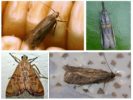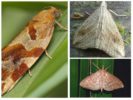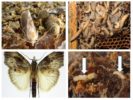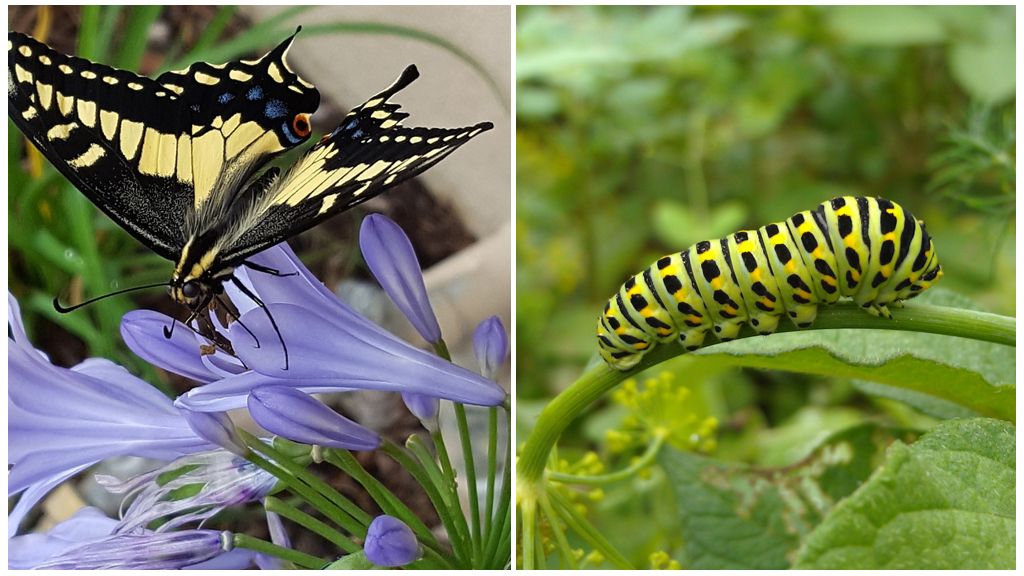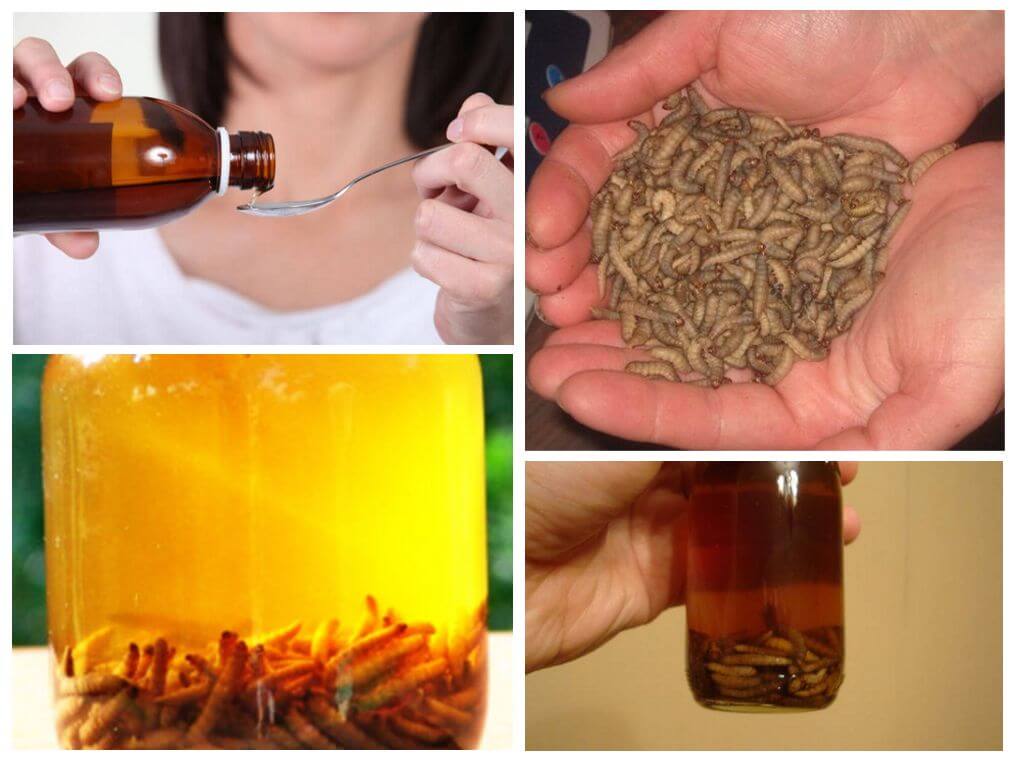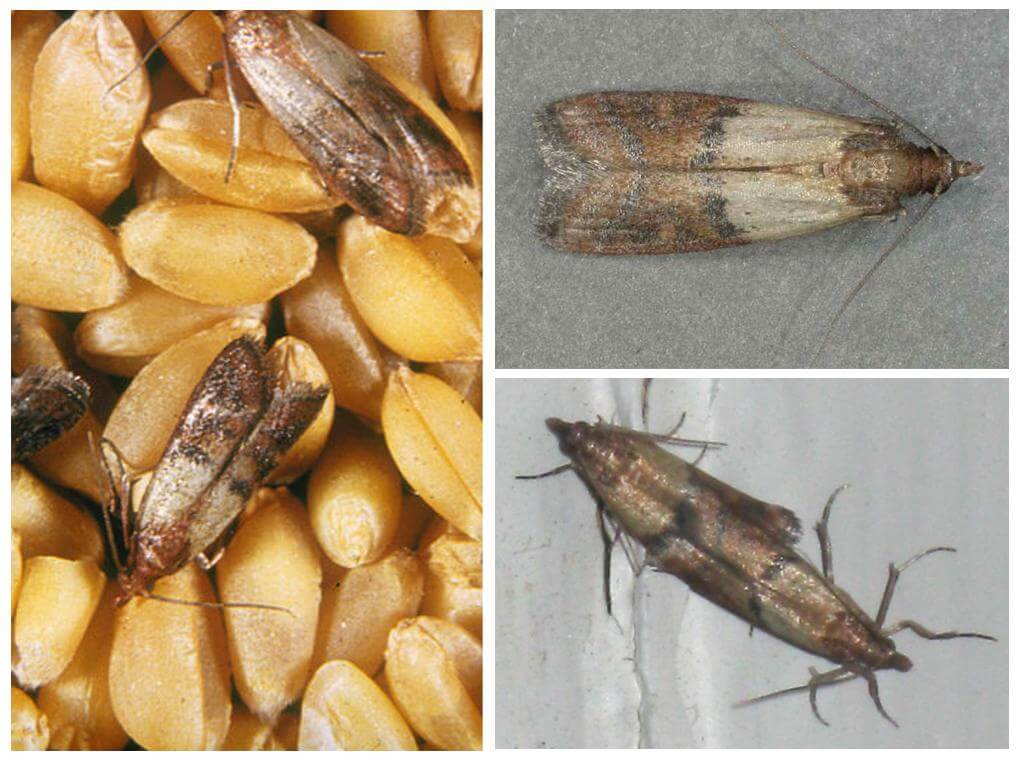- Types of fire
- Types of fire
- Moth fire
Mole - Perhaps the most common pest insect on earth, which gives people a lot of trouble. One of its varieties is moths. They belong to the family of Lepidoptera, which includes more than 6000 species of moths (below is a butterfly moth in the photo). Each species has its own characteristics and taste preferences: some eat plants, others eat foods, and still others pose a threat to bee colonies. Surprisingly, it is not adult individuals that are dangerous, but their larvae - caterpillars of moths. This article will talk about the most common types of such a pest.
Mill
Mill fire - a butterfly of dark gray color, the length of which reaches 14 mm. An insect from India was introduced; it prefers to eat cereals, flour products, nuts, mushrooms and dried fruits. Therefore, flour mills, bakeries or mills become its habitat. The life span of the pest is about three weeks, during which the female manages to lay about 200 eggs. Seven generations are brought out in a year.
Cereal
Cereal fire - a polyphagous pest of stocks of plant origin. This variety of butterflies is very similar to the representative described above, a distinctive feature is only smaller sizes.
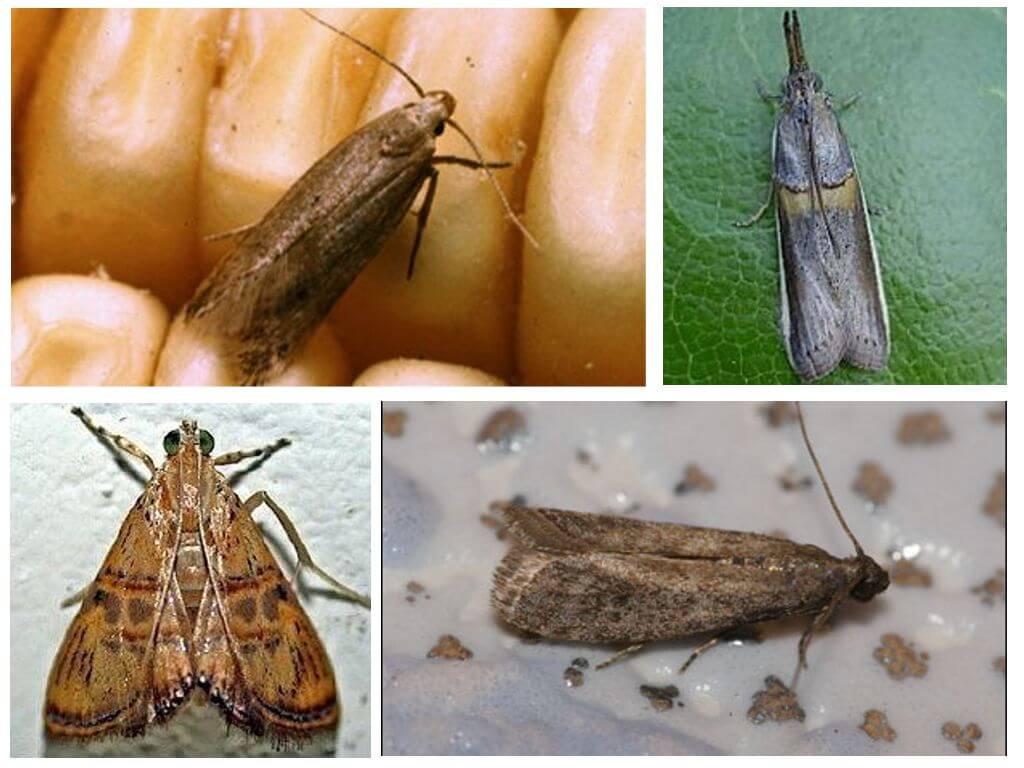
Flour
Flour Flame - a sufficiently large light brown butterfly, the wingspan of which reaches up to 30 mm. It is planted in granaries, confectioneries, flour mills and shops. A favorite treat of the pest caterpillars is cereals, grain, confectionery and seeds. Adults do not eat, but only drink water. That is why they can often be found in a cup of water.
Acacia
Acacia Fire - a light gray butterfly, living mainly in the steppe and forest-steppe zones. It is especially dangerous for legumes: beans, lentils, peas or soybeans.
Leaflet
Leaflet - This species includes a huge number of butterflies, a feature of which is the ability to fold wings on the back in a horizontal position. Especially dangerous for trees are two-centimeter caterpillars that have a different color (from green-yellow to brown). Adult individuals, unlike caterpillars, have long gray wings with a pattern and a white stripe in the central part.
Field
Field moth - tan butterfly, the wingspan of which does not exceed 27 mm. Fireworm caterpillars eat cabbage, radish, sorrel, horseradish, spinach and beets. At one time, the female lays up to 60 eggs.
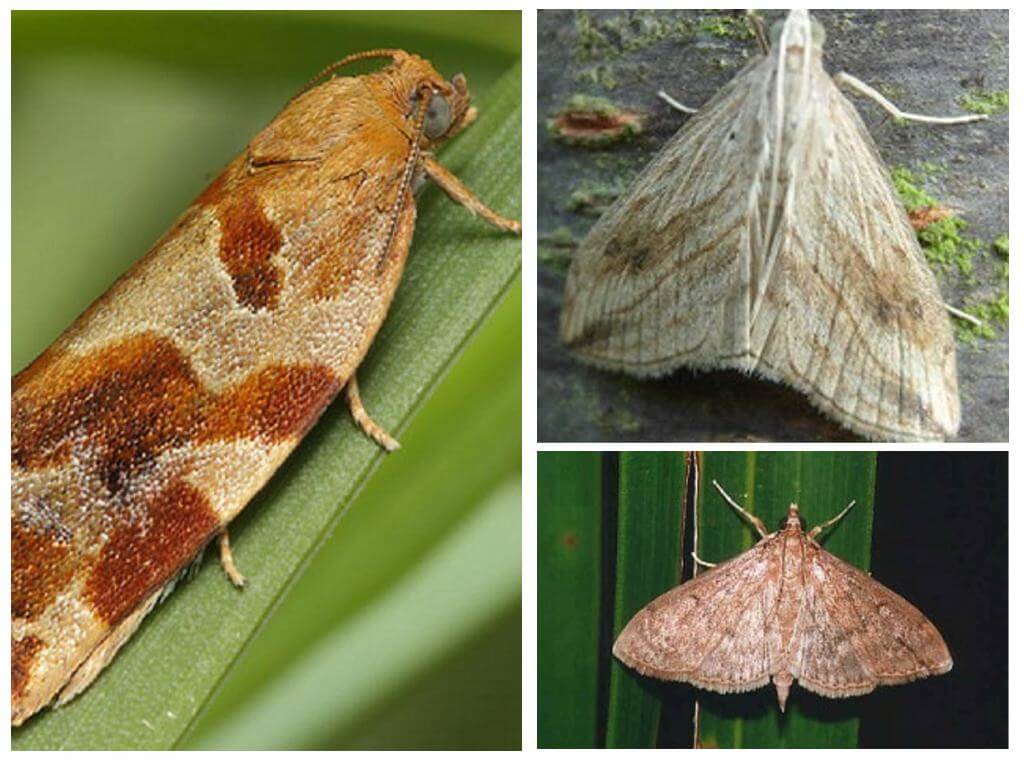
Gooseberry
Gooseberry butterfly - a malicious and dangerous pest of gooseberries and currants. Insects spend the winter in the ground in a state of pupae. With the advent of warm days, butterflies of fire appear from them, which lay their eggs in flower buds. Hatched caterpillars of the ognevka feed on the flesh and seeds of the resulting fruit. After destroying the first ovary in this way, the caterpillars crawl onto a nearby berry through a hole gnawed at the side. After 5-6 days, the caterpillars move to the next berry in a similar way, entangling the bunch with a thin spider web.
Wax
Wax wax known to a wide range of beekeepers.Its caterpillars are a dangerous pest of honeycombs. They damage not only honeycombs, but also honey, brood and bee bread. As a result, the framework and insulation of the hives are damaged, and this in turn leads to the death of bee families.
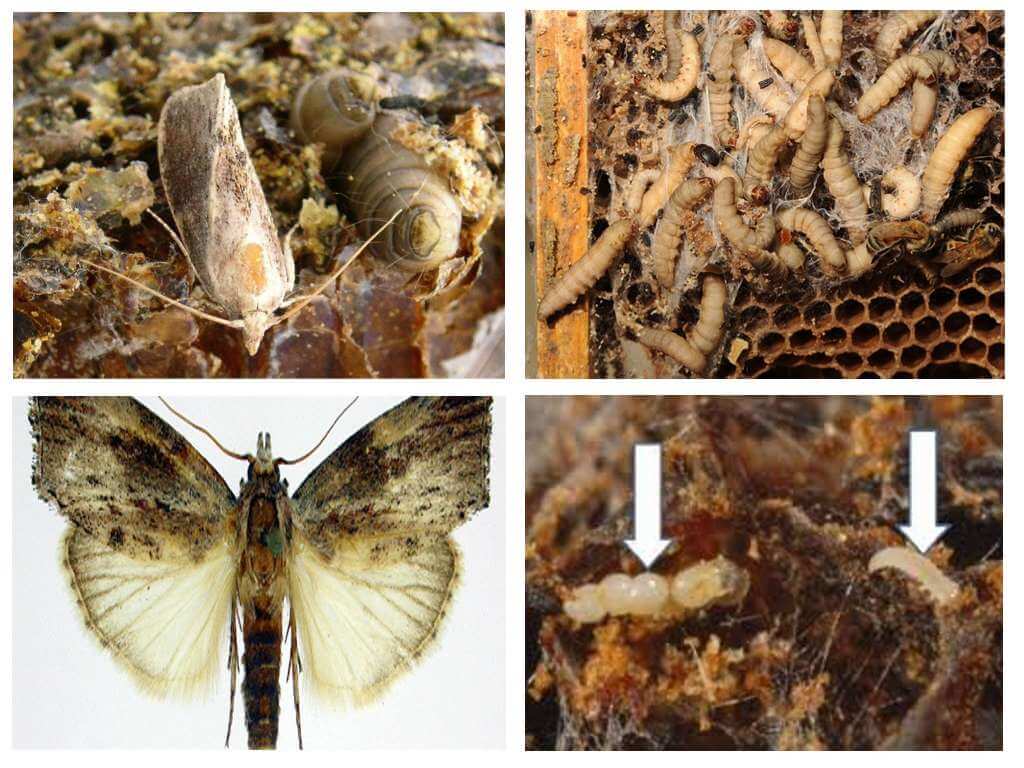
Interesting!
However, the insect has a positive side: since ancient times moth caterpillars are used in folk medicine for the preparation of medicinal tincture. Such a drug has an antiviral and antibacterial effect, helps to improve metabolism, strengthen the immune and nervous systems.
How to get rid
To get rid of fires, insecticidal preparations are used. They spray the infected plants before flowering and after it. At the moment when the caterpillars of the moths spoil the fruits, biologics are used. Effective ways to control pest on fruit trees:
- Burning fallen leaves;
- Cleaning the trunk bark and its whitewashing with a calcareous compound.
To combat the caterpillars and butterflies of the pest, agrotechnical methods are also used, digging and hilling the bushes of currant or gooseberry. It is necessary that the earthing up height is at least 10 cm. Such a layer of earth is quite enough so that the butterflies wintering in the soil cannot get out. You can also pick up pests and damaged berries by hand.
Firestones that got into the house and spoil the products can be destroyed with the help of traps or folk “insecticides”, such as bay leaf, lavender, wormwood, tobacco, needles, citrus peel or geranium. Their smell discourages adults, so they are afraid to lay eggs in those places. No less effective is soap or vinegar. A solution prepared from these components is used to treat the surface of cabinets where food stocks are stored.
To prevent the appearance and spread of fire spoils that spoil products, you must:
- Regularly clean and ventilate the room;
- Periodically do an audit in kitchen cabinets;
- Store food in tightly closed containers.
Timely detection of caterpillars will help get rid of the pest in the shortest possible time.
